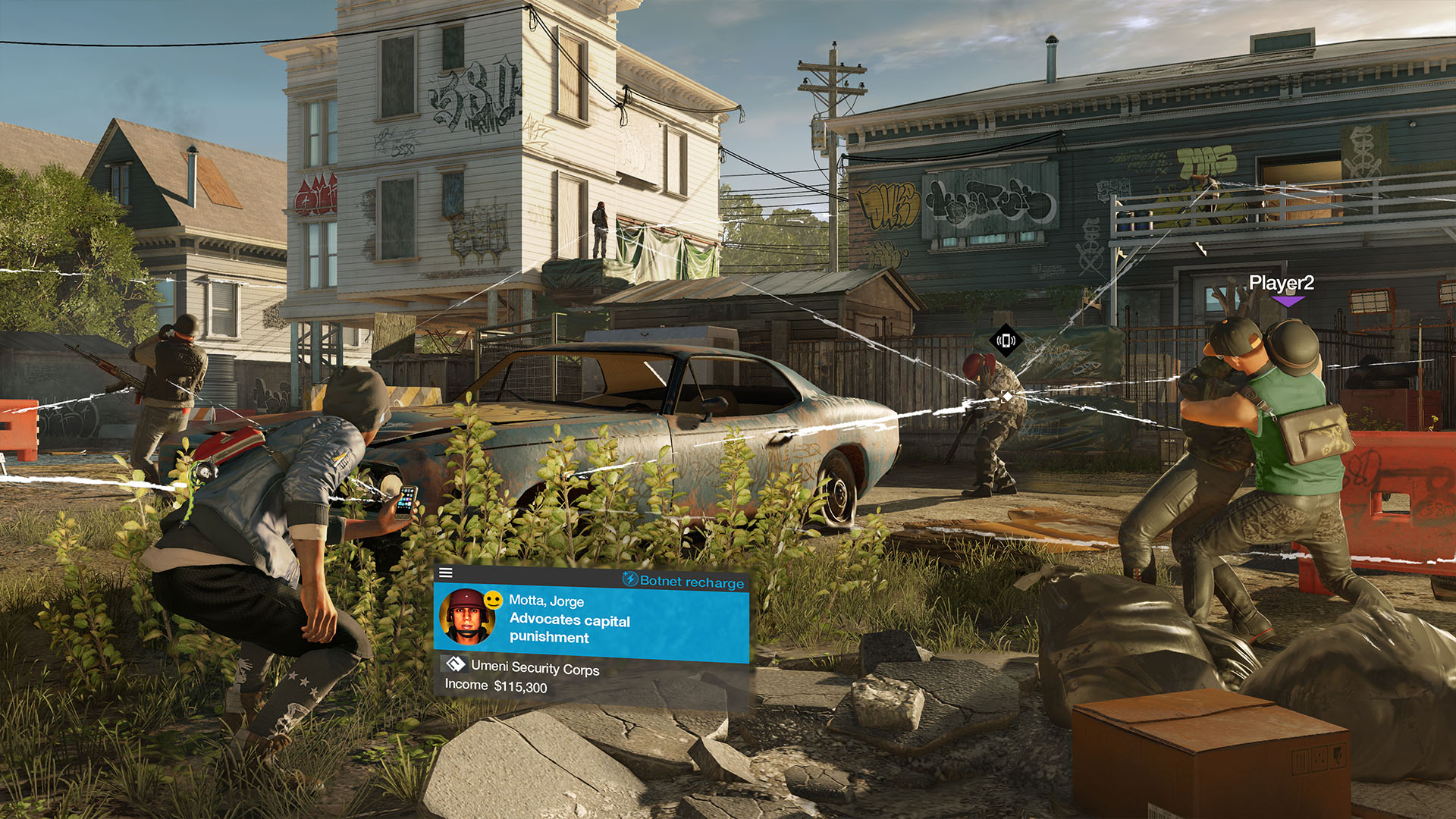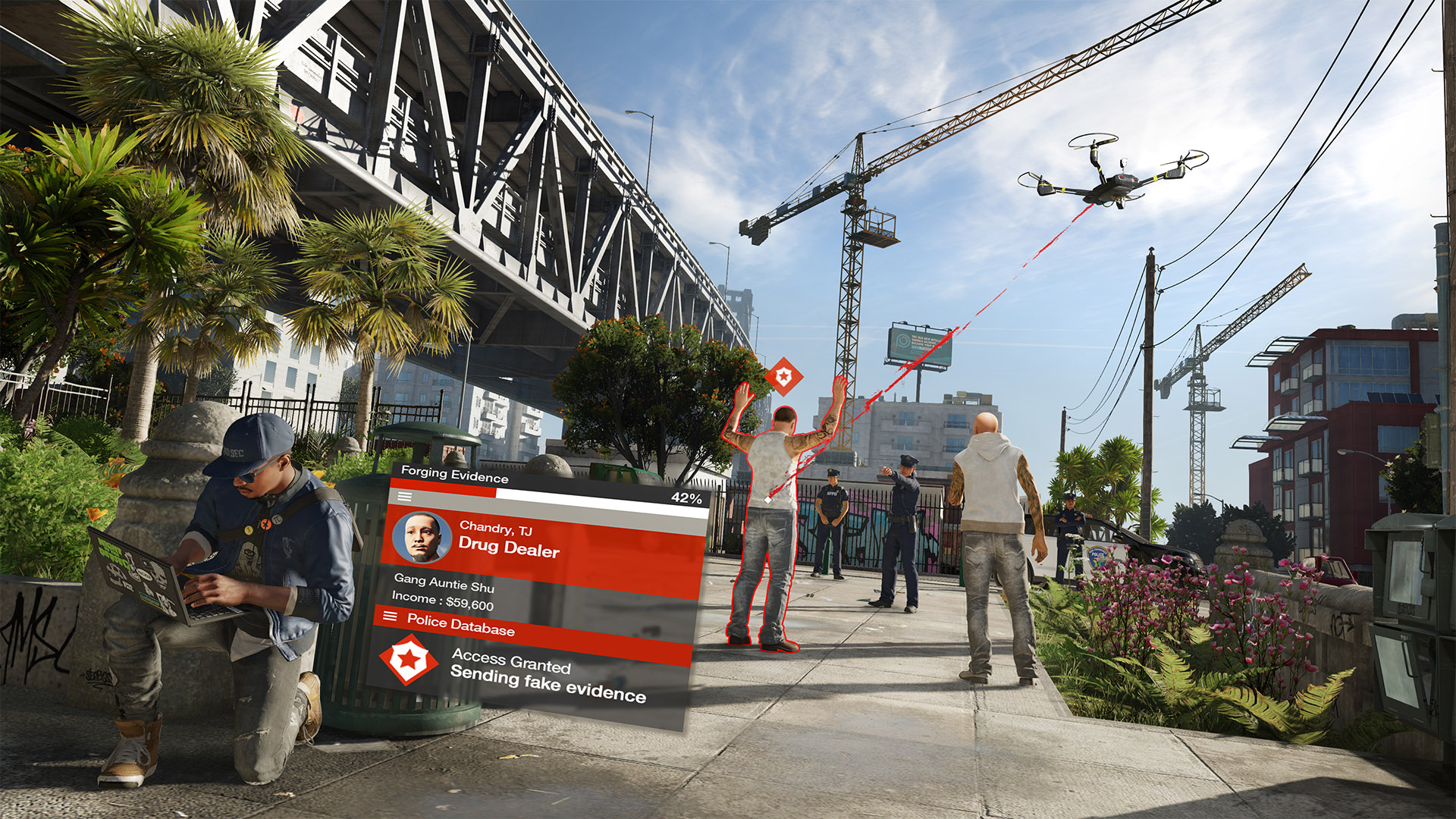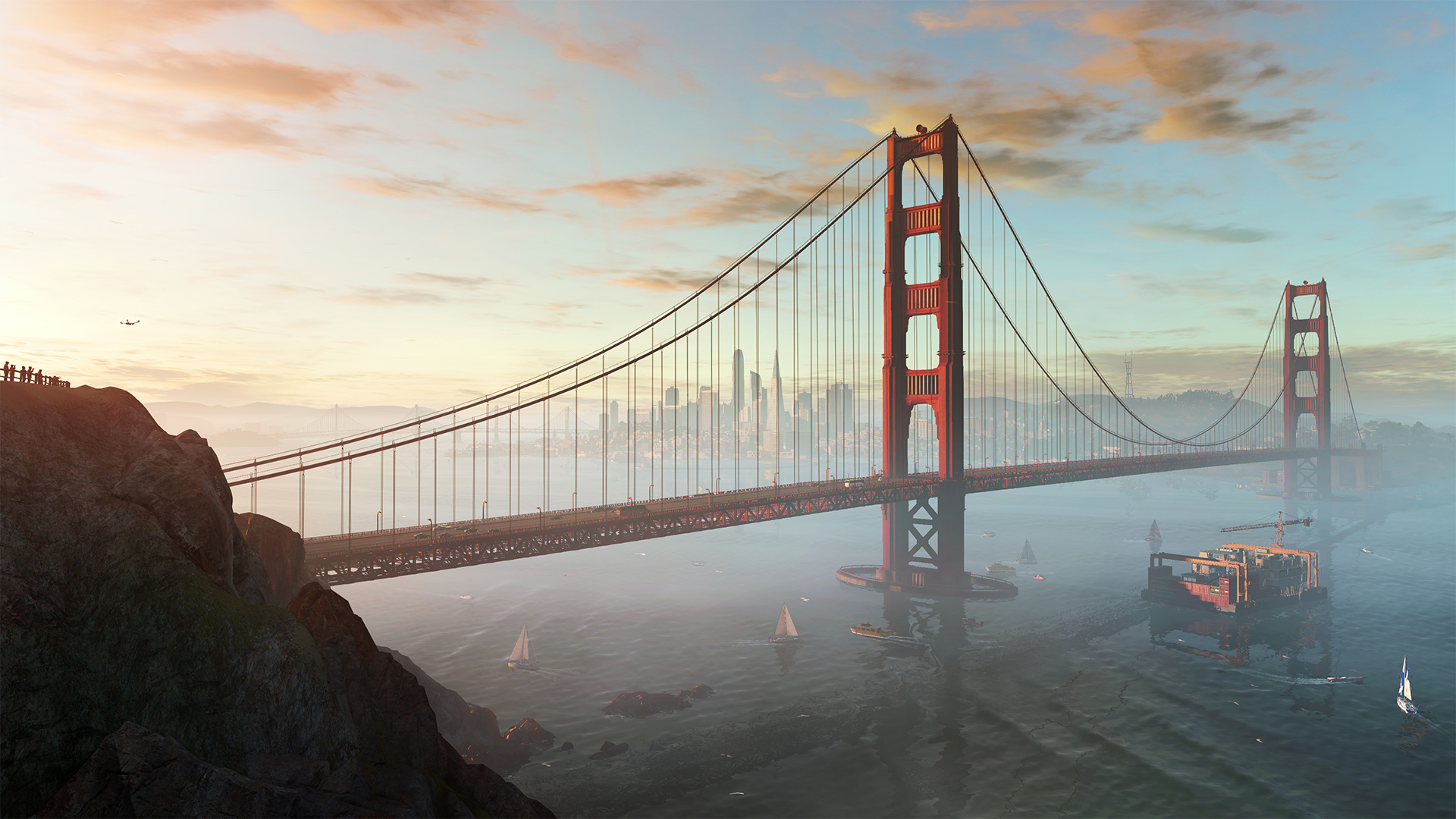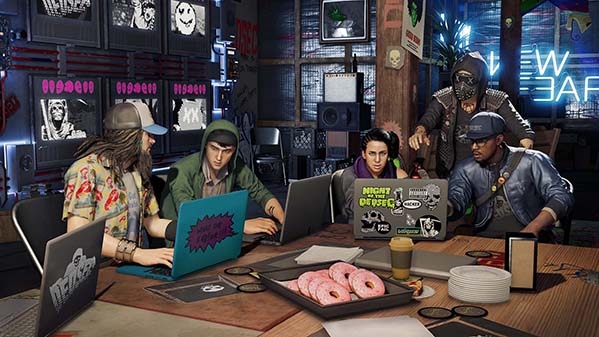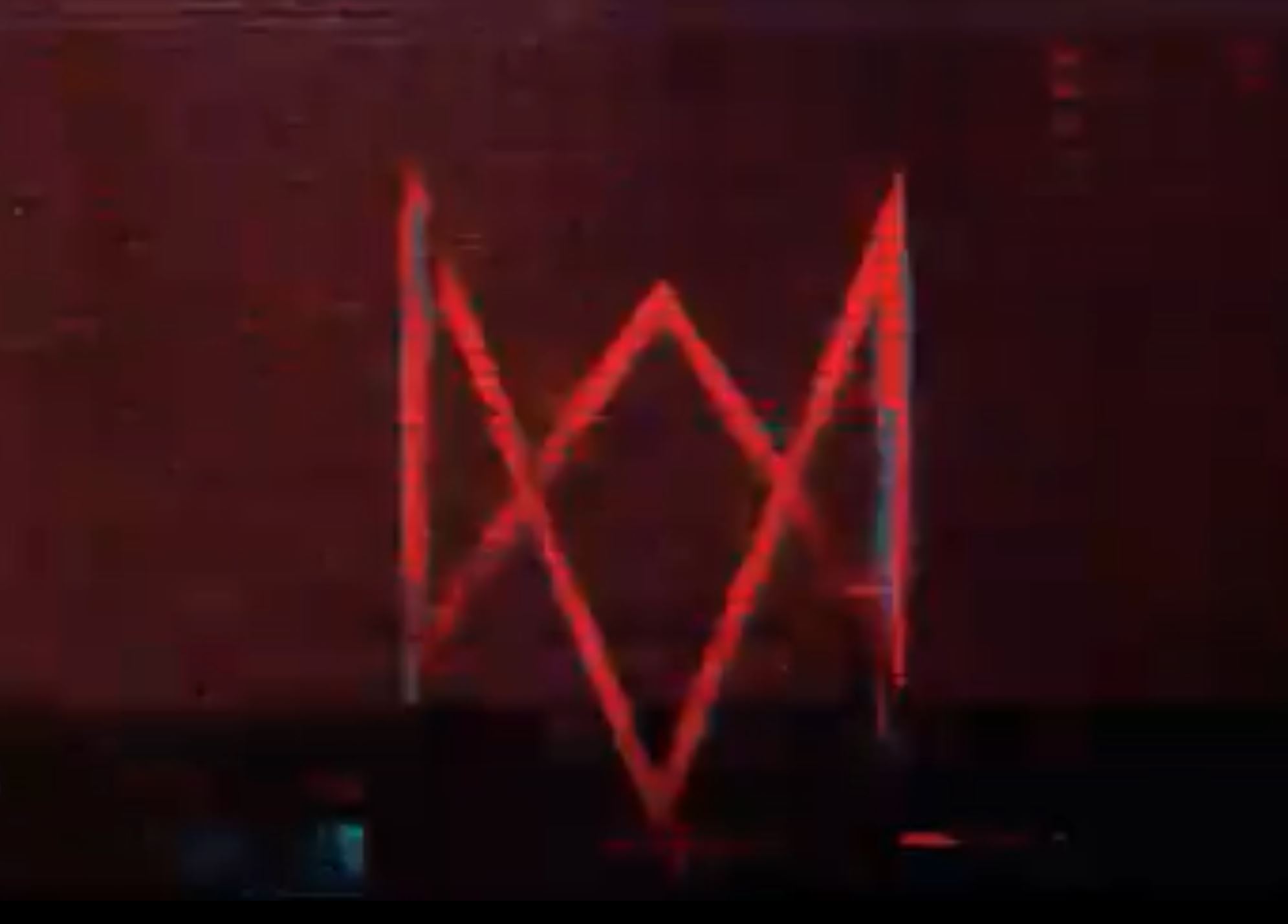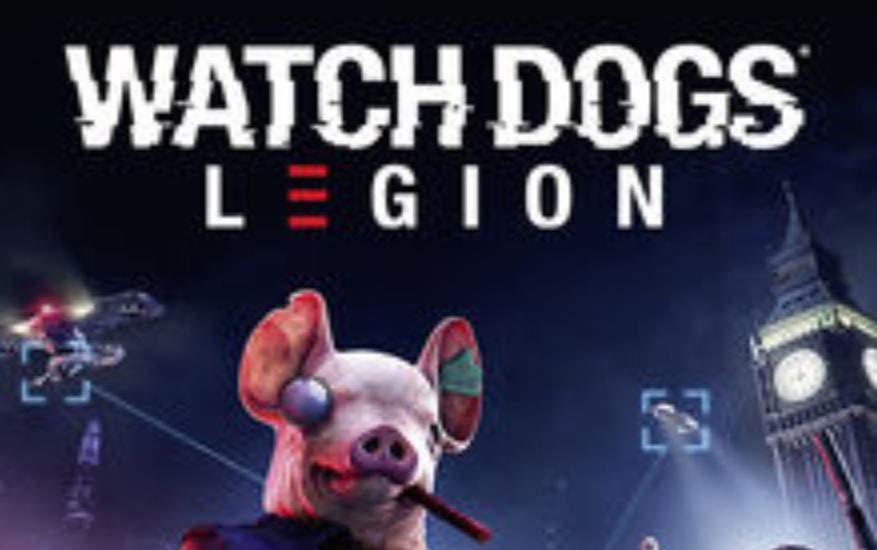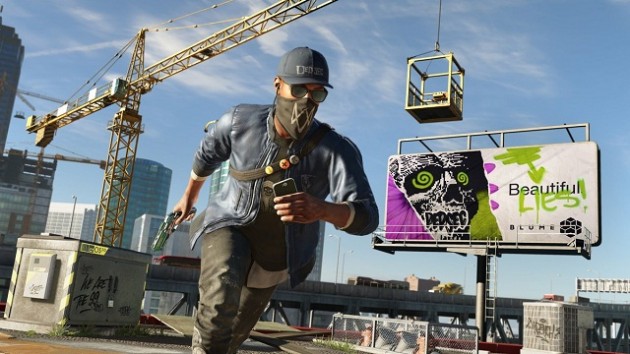
Playing Watch Dogs 2, I started to wonder: what the hell kind of phone is Marcus Holloway, the game’s protagonist, using anyway? Dedsec wouldn’t go in for any of the privacy violating platforms offered by Google and Microsoft, but they also haven’t gone the full Stallman, either. Their own custom OS? Imagine the development resources needed to maintain it. I mean sure, obviously, it runs the Linux kernel, but a kernel does not make a complete, usable mobile OS. Also, the platform runs generic apps from… somewhere? Maybe an implementation of Android’s runtime? Who is coding this. Where did they get those resources?
Look, Dedsec’s San Francisco cell is full of geniuses, but I can’t see how they have the time to code OSes when they’re out fighting the tyranny of Blume and its ctOS system. The game does imply that there’s a larger Dedsec organisation out there, of course (it’s returning from the first game, after all), but it also implies that the San Francisco cell Marcus is a part of is basically the head of the dragon, and they don’t do much talking about app development.
The fact that this is my biggest concern with Watch Dogs 2 should be an indicator of how much of an improvement over the original Watch Dogs it is. Don’t get me wrong, I liked the first game— a lot more than many other people did, even. Aiden Pearce was an unlikeable psychopath, for sure, but the hacking mechanics were solid, and it felt like a breath of fresh air in the stale genre of ‘generic Ubisoft open-world title’.
With the sequel, Ubisoft have fixed up the problems and made the game the first one should have been. The switch in location, from the cold, dour streets of Chicago to the vibrant San Francisco and surrounds, provides for a much livelier setting for a tale of hackers fighting back against an oppressive technocratic society.
There are parallels to a lot of real-world Silicon Valley companies in Watch Dogs 2. The game isn’t as over-the-top with parody as, say, Grand Theft Auto V, and that means that it’s able to hit a little closer to the bone on the kind of issues that these corporations present. There’s in-game equivalents for Google, Facebook, Uber and other startups from the current Silicon Valley tech boom. The big difference is Blume, the in-game company that makes ctOS and which has no real-world equivalent, although comparisons between its hipster CTO and Microsoft CEO Satya Nadella can be easily made.
There is, however, one real-world company represented in the game: Ubisoft themselves. As in this year’s The Division, the company has made a fake studio in the setting, and one mission has you infiltrating it to find a trailer for an upcoming game. In what can only be described as the most meta game announcement in history, the trailer is in fact for a real upcoming Ubisoft game, due out next year. In almost any other game this would be hilariously immersion-breaking, but here it fits so well, and is a cool way to flesh out this world.
The characters that make up Dedsec are all fairly interesting, and each one has a distinct arc over the course of the game. I particularly liked the way the game handled autistic character Josh, who could so easily have been passed off as ‘token awkward nerd’. A lot of effort went in to creating mannerisms and routines for him, and it’s paid off, creating one of the most sympathetic portrayals of an autistic character in any medium, let alone video games. At one point in the game, a conversation between the other Dedsec members talks about how hard it’s been for Josh to find work or any kind of normality in his life due to the algorithmic profiling that ctOS uses.
The ctOS system itself looms over the game as a horrifying commentary on how we’ve given over so much of our personal data and information to huge corporations whose business models generally involve selling that data, or the profiles of us that they create with it, to whoever’s willing to pay for it. There’s nothing presented here that isn’t real in some form, and as we launch into a future of home automation, self-driving cars and the so-called ‘internet of things’, a reality where a ctOS-like system exists doesn’t seem as far-fetched now as it did even a few years ago. That such a system can be easily hacked by a few millennials with mobile phones and some chutzpah doesn’t offer a lot of hope, either.
Through that lens, Watch Dogs 2 is a pretty depressing, horrifying experience. The fun and colour of the surface comes away to reveal a surprisingly dark undertone for a game from a major publisher. Some of this is tempered by the fact that the game doesn’t require players to kill at any point. While guns are always an option, a more surgical stealth approach always ends up working out best. The only gun that’s worth using most of the time is the stun gun, which can be upgraded to take down stronger enemies as the game progresses. Marcus can also use indirect methods of causing harm, by setting up switchboxes and other electrical equipment to explode or stun, or by initiating a gang war in an area. My personal favourite option here is the police option, which creates a fake arrest warrant on a target and sees police show up and take them away. It’s slow, but generally nonlethal and helps thin out areas before going in.
There is a lot to like about Watch Dogs 2. Apart from somewhat tighter driving and shooting mechanics, the game benefits a lot from the addition of two drone buddies to help you out. One of these is a little land-based remote control unit that can be used to hack terminals without needing to get Marcus to them directly. The other is a quadcopter that can be very useful in providing an aerial view of a mission and marking targets. This is great for helping to plan out an approach to a particular mission or area, and dramatically reduce the amount of trial-and-error needed to approach missions.
There are still some annoying issues here and there, like the way security cameras are sometimes arbitrarily rendered ‘too far’ for you to hack into during a mission, but overall this is a strong sequel to a game that was better in concept than execution. Visually, it’s excellent as well, with locations and characters all looking great. Framerate can occasionally hitch, but it never got in the way of the game for me.
Ubisoft’s particular style of open world game, which is a genre of its own nowadays, has never been as well done as it is in Watch Dogs 2, and it’s clear that, as the company continues to iterate on the formula it started off with in the original Assassin’s Creed, it’s getting very good at making them. A lot of the ‘Ubisoft-isms’ that used to mar these experiences have been cleaned up or at least made tolerable now, and I never felt like I needed to go out of my way to get through the game. If the underlying idea of Watch Dogs is appealing to you, then I can’t recommend Watch Dogs 2 enough.
Beautiful, vibrant, alive world
Main character is much more engaging than Aiden Pearce
Hacking mechanics are as fun as ever
Ray Kenney!
Occasional visual glitches - this is Ubisoft, after all
Music selection is mostly uninspiring

